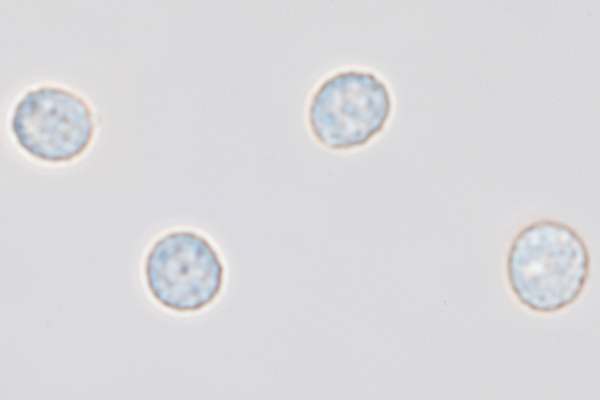Auriscalpium vulgare Gray - Earpick Fungus
Phylum: Basidiomycota - Class: Agaricomycetes - Order: Russulales - Family: Auriscalpiaceae
Distribution - Taxonomic History - Etymology - Identification - Culinary Notes - Reference Sources
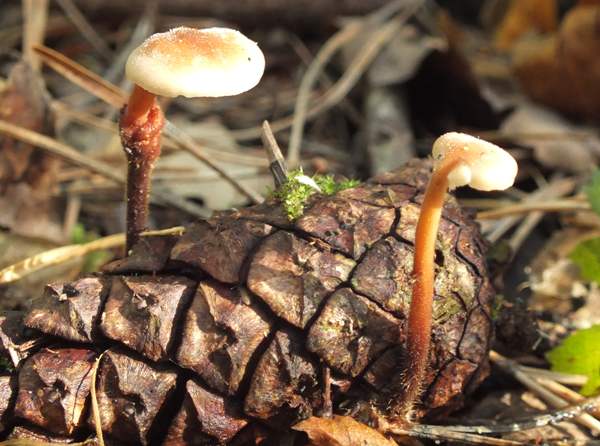
Looking quite unlike any other fungus, Auriscalpium vulgare grows nearly always from rotting cones from pines and occasionally other kinds of conifers.
Despite its spiny fertile surface this strange little mushroom is unrelated to the other spine-bearing fungi such as Hydnum repandum and Hericium erinaceus. (Spines are no indicators of evolutionary relationship, it seems, as spined fungi occur is several fungi families.)
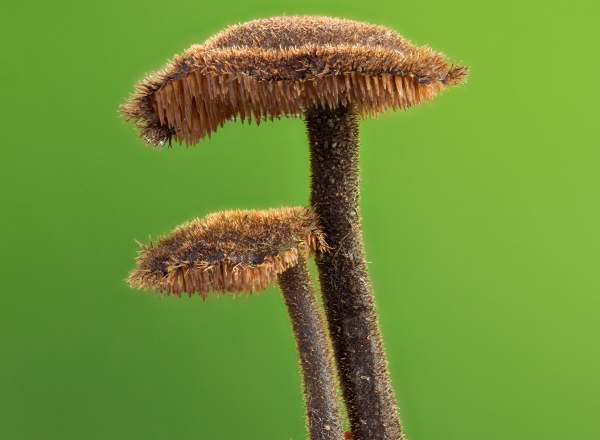
Distribution
Infrequent and apparently localised in Britain and Ireland, Auriscalpium vulgare occurs also throughout much of Europe, Asia and the Americas.
Taxonomic history
This species was first described in 1753 by Carl Linnaeus, who placed it in the genus Hydnum (because it has a spiny fertile surface rather like other hedgehog fungi). The Earpick Fungus was given its present name in 1821 by the British mycologist Samuel Frederick Gray (1766 - 1828).
Synonyms of Auriscalpium vulgare include Hydnum auriscalpium L., Scutiger auriscalpium (L.) Paulet, Pleurodon auriscalpium (L.) P.Karst., Leptodon auriscalpium (L.) Quél., Hydnum atrotomentosum Schwalb, Auriscalpium auriscalpium (L.) Kuntze, Auriscalpium auriscalpium (L.) Banker, Hydnum fechtneri Velen., Pleurodon fechtneri (Velen.) Cejp, and Auriscalpium fechtneri (Velen.) Nikol.
The Earpick Fungus Auriscalpium vulgare, the type species of its genus, is the only known auriscalpium species in Britain and Ireland.
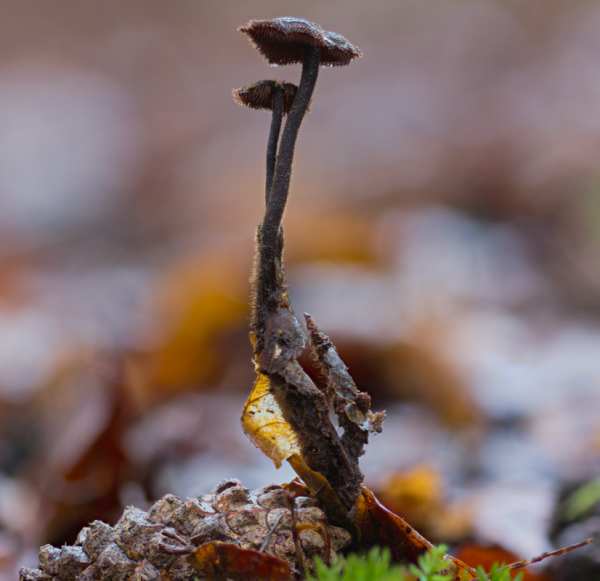
Etymology
Auriscalpium comes from the Latin noun auris, an ear, and the Latin verb scalpare, to scratch. Earpick is a pretty good English translation, therefore, The specific epithet vulgare means common (and as these are rare fungi that can only be interpreted as 'the most common of the handful of known species in this genus worldwide').
Identification guide
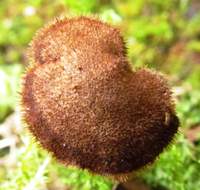 |
Cap1 to 3cm across and usually kidney shaped; covered in fine bristles; pale brown and flexible when young, becoming tough and turning darker brown with age. |
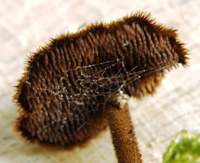 |
SpinesDensely packed, typically 0.5mm diameter and 2 to 3mm long; whitish at first (see picture below) becoming brown with age (as seen on the left). StemEccentric (often attached right at one edge of the cap), 1.5 to 2mm diameter and up to 6cm long, tough and covered with short fine bristles the same colour as the cap. |
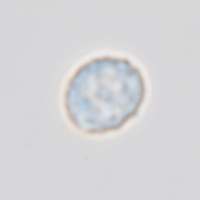 |
SporesBroadly ellipsoidal or globose, 4.6-5.5 x 4-5µm; covered with tiny bumps; hyaline; amyloid. Spore printWhite. |
Odour/taste |
Not distinctive. |
Habitat & Ecological role |
On conifer cones, particularly of pines, and sometimes on conifer litter on the forest floor. |
Season |
August to November in Britain and Ireland. |
Similar species |
There are none in Britain and Ireland - or at least if there are they have yet to be discovered! |
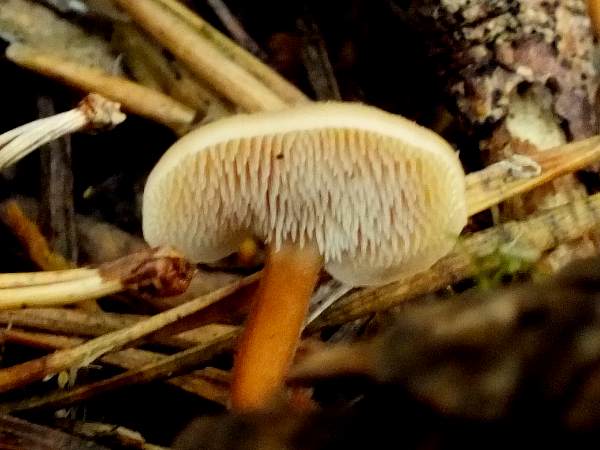
Culinary Notes
This insubstantial and tough fungus is generally regarded as inedible.
Reference Sources
Fascinated by Fungi, 2nd Edition, Pat O'Reilly 2016, reprinted by Coch-y-bonddu Books in 2022.
BMS List of English Names for Fungi
Dictionary of the Fungi; Paul M. Kirk, Paul F. Cannon, David W. Minter and J. A. Stalpers; CABI, 2008
Taxonomic history and synonym information on these pages is drawn from many sources but in particular from the British Mycological Society's GB Checklist of Fungi.
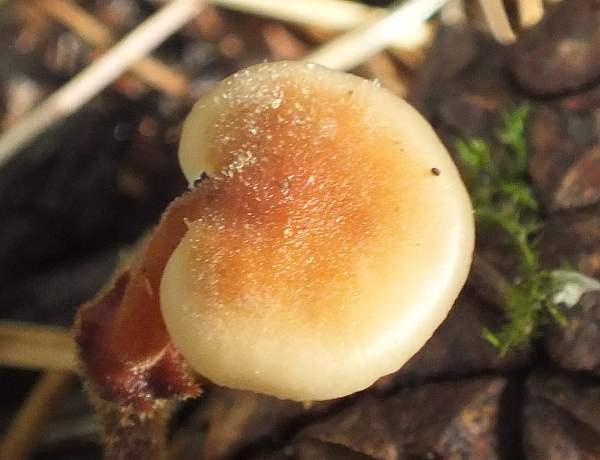
Acknowledgements
This page includes pictures kindly contributed by David Kelly.
Fascinated by Fungi. Back by popular demand, Pat O'Reilly's best-selling 450-page hardback book is available now. The latest second edition was republished with a sparkling new cover design in September 2022 by Coch-y-Bonddu Books. Full details and copies are available from the publisher's online bookshop...
